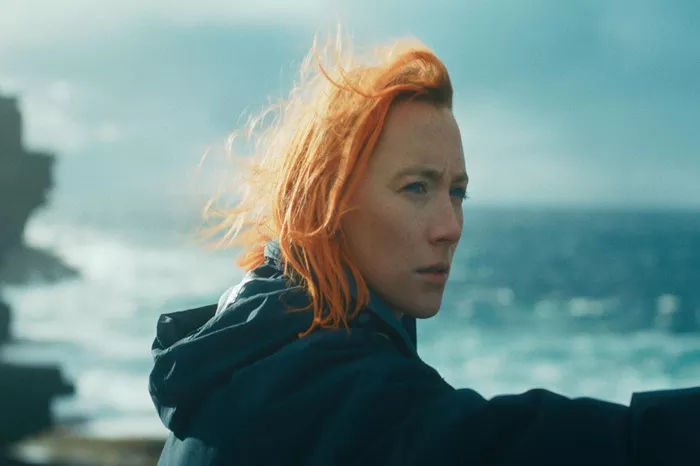A common delusion among those with mental illness is the belief that their lives are being played out on screen. For Amy Liptrot, however, this sentiment has become reality; her memoir detailing her return to the Orkney Islands and her recovery from alcoholism has been adapted into a feature film.
Late at night, Liptrot finds herself captivated by the screen, where actress Saoirse Ronan portrays a character inspired by her life. The experience feels surreal, as if she is looking through a distorted mirror reflecting her own journey.
One morning, Liptrot stumbled upon footage of Ronan on the farm where she grew up, clad in a boilersuit and rolling a cigarette. The striking resemblance was so uncanny that her toddler son pointed at the screen, exclaiming, “Mummy!” The authenticity of the portrayal thrilled and confused Liptrot, illustrating the depth of Ronan’s interpretation.
The filming process revealed another unexpected connection: audition tapes featuring Ronan alongside other actors. Despite her Irish accent differing from Liptrot’s light Scottish voice, Ronan’s mannerisms and nervous delivery captured Liptrot’s essence. Their brief online meetings had seemingly allowed Ronan to channel Liptrot’s spirit through the screenplay.
Adapting one’s life story for the screen is an unusual experience, and Liptrot discovered that the film heightened familiar themes of memory and identity. Time and retelling often distort realities and reveal new insights.
The journey began eight years ago when Liptrot first met producer Sarah Brocklehurst. Numerous meetings followed, during which Liptrot feared the project might stall. Eventually, she engaged in long conversations with director Nora Fingscheidt, co-writing the screenplay. To create some psychological distance, they chose to name the protagonist Rona instead of Amy, allowing Liptrot to speak of her in the third person.
In writing the screenplay, Liptrot and Fingscheidt introduced fictional elements while remaining true to the core of Liptrot’s story. This approach enabled them to visualize internal struggles, such as depicting Rona removing her headphones to embrace nature’s sounds. While these moments did not occur in Liptrot’s life, they resonated with her emotional truth.
The collaboration transformed Liptrot’s personal narrative into a shared creation with Fingscheidt and Ronan. As filming progressed, Liptrot felt a mix of detachment and connection, oscillating between being an artist and a subject. Some memories resurfaced with raw intensity, reminding her of the stark reality of her past.
The film crew, composed of around 30 individuals, filmed on the Orkney Islands, increasing the local population and immersing the islanders in the production. Liptrot felt a sense of responsibility toward both the crew and her community, revisiting old habits and dreaming about the film as if it were part of her reality.
As Liptrot observed the filming process, she experienced the surreal sensation of being an observer of her own life. Watching Ronan’s portrayal, she began to feel as though Rona was an enhanced version of herself, one that presented a more compelling narrative than her own.
The film’s editing process revealed the nuances of storytelling, with Liptrot witnessing how minor changes could significantly impact the narrative’s focus. Although some memorable moments from her book did not make the final cut, the film successfully encapsulates the emotional core of her journey.
In the end, Liptrot recognizes the intensity of having her life dramatized for the screen. While The Outrun emphasizes her family dynamics, it also explores themes of mental illness, addiction, and the quest for authenticity. As she appears in the film as a swimmer, Liptrot affirms that her journey continues, intertwining her past and present while embracing her identity as a recovering alcoholic.
The Outrun opens in cinemas on Friday, and Liptrot’s memoir is available in paperback.
Related topic:
Transformers One Launches with $39M Global Debut Amid Mixed Reception
“When Fall is Coming” Explores Life, Death, and Family Dynamics
Heartwarming Journey of ‘Runt’ Highlights Resilience and Community

